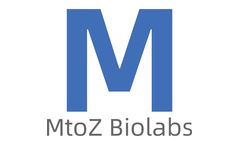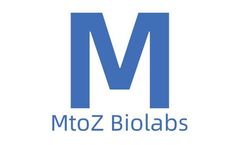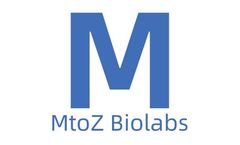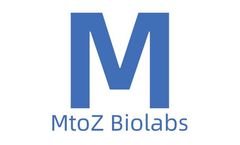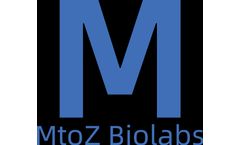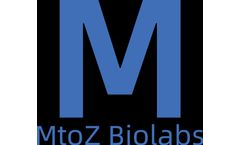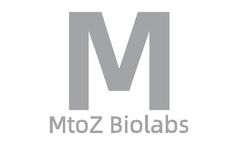Refine by
Lc Ms Articles & Analysis
35 articles found
The workflow typically involves high-resolution mass spectrometry (LC-MS/MS) coupled with sophisticated enrichment strategies. First, proteins are extracted from cells or tissues and digested into smaller peptides. ...
Using specialized tools like antibodies that recognize the unique signature left after ubiquitin digestion (the "di-glycine remnant" or K-GG motif), scientists can selectively isolate ubiquitinated peptides from a cell lysate. Mass Spectrometry (LC-MS/MS): This enriched sample is then analyzed by liquid chromatography-tandem mass spectrometry ...
The gold standard for Sterol Lipids Analysis is a combination of chromatography and mass spectrometry (LC-MS/MS or GC-MS/MS). Chromatography (LC or GC): This first step acts like a molecular sorting system, separating the different sterol lipids from each other and from other molecules in the ...
The Technical Revolution in Glycan Analysis Modern glycomics leverages breakthrough technologies that have transformed the field: Nano-LC-MS/MS with electron-transfer dissociation capturing fragmentation patterns impossible with earlier techniques Isotope-coded glycan tagging enabling precise quantitative comparisons across disease states ...
Advanced methods, such as liquid chromatography-tandem mass spectrometry (LC-MS/MS), are indispensable tools. They allow researchers to: (1) Investigate Endocrine Mechanisms: Advanced analysis techniques help researchers study steroid hormone imbalances associated with various conditions, including cortisol dysregulation, reproductive ...
Creative Proteomics offers specialized glucosinolates analysis services using advanced technologies like LC-MS and GC-MS, enabling researchers to identify, quantify, and profile glucosinolates in various sample types. Key Analytical Techniques Liquid Chromatography-Mass Spectrometry (LC-MS): ...
One of the most effective methods is mass spectrometry (MS), often combined with liquid chromatography (LC-MS). This technology enables the detailed identification and quantification of lipids and metabolites from small samples like exosomes, which are typically limited in number. ...
High-Performance Liquid Chromatography (HPLC)(1) HPLC can be used to quantitatively analyze various components in the medium, such as amino acids, sugars, vitamins, and other small molecules.(2) This technique provides high resolution and can separate and quantify individual components in complex mixtures.2. Mass Spectrometry (MS)(1) Mass spectrometry is a highly sensitive and ...
Proteomic AnalysisLiquid chromatography-tandem mass spectrometry (LC-MS/MS) can be used to identify and quantify collagen, such as labelled (like isotope labelling) or label-free (like label-free quantification) methods.2. ...
This method requires specific antibodies and has high sensitivity and specificity, but the cost is relatively high.Mass SpectrometryMass spectrometry (such as LC-MS/MS) can provide highly accurate qualitative and quantitative analysis of collagen and its degradation products, but the equipment cost is high and the operation is complicated.Each ...
For example, some proteins may be upregulated or downregulated in health and disease states, or between normal and treated cells.Detection MethodsThe most commonly used technique is mass spectrometry, particularly liquid chromatography-tandem mass spectrometry (LC-MS/MS). Additionally, two-dimensional electrophoresis and Western blotting are ...
Here we discuss the key tools and techniques used for ADC characterization. Mass Spectrometry (MS) Mass spectrometry is indispensable in the field of ADC characterization due to its ability to provide detailed information on the molecular composition and structure of ADCs. ...
Firstly, the protein sample needs to be enzymatically digested, and then the ubiquitination site is analyzed by liquid chromatography-tandem mass spectrometry (LC-MS/MS). Finally, the ubiquitinated proteins and their ubiquitination sites can be determined by advanced mass spectrometry data analysis (such as database search and protein ...
Subsequently, different 5' end structures are identified by liquid chromatography-mass spectrometry (LC-MS), and the capping rate is calculated.(2) CharacteristicsHigh resolution and accuracy; but this method requires high quality and purity of the sample, and is easily affected by enzyme activity. ...
The 5' cap is a critical quality attribute (CQA) of IVT mRNA, which needs to be thoroughly characterized during product and process development.The LC-MS-based method developed by Michael Beverly and others in 2016 has become the standard method for confirming the 5' cap and measuring capping efficiency. ...
In recent years, an affinity capture LC-MS/MS method has been developed for detecting total antibodies. It combines the characteristics of ELISA and LC-MS/ MS. ...
Current mass spectrometry techniques include liquid chromatography-mass spectrometry (LC-MS), gas chromatography-mass spectrometry (GC-MS), and capillary electrophoresis-mass spectrometry (CE-MS). LC-MS has the advantage of high sensitivity and high resolution and is capable of detecting more ...
Liquid Chromatography-Mass Spectrometry (LC-MS) Among the cornerstones of bile acid analysis methods stands the formidable combination of liquid chromatography-mass spectrometry (LC-MS). LC-MS pairs the separation power of liquid chromatography with the molecular identification and quantification ...
Creative Proteomics offers bile acid analytical methods, such as Liquid Chromatography-Mass Spectrometry (LC-MS) and Gas Chromatography-Mass Spectrometry (GC-MS), that can accurately characterize and quantify the diversity of bile acid species and help researchers delve deep into the nuances and explore their complex roles in health and disease. ...
Using human rectal cancer cells (CRC), Derry et al. applied DARTS technique with LC/MS and MASCOT data analysis methods to demonstrate that GSE can lead to an overall downregulation of translation-related proteins and strongly inhibit the PI3k-Akt-mTOR signaling pathway. ...



